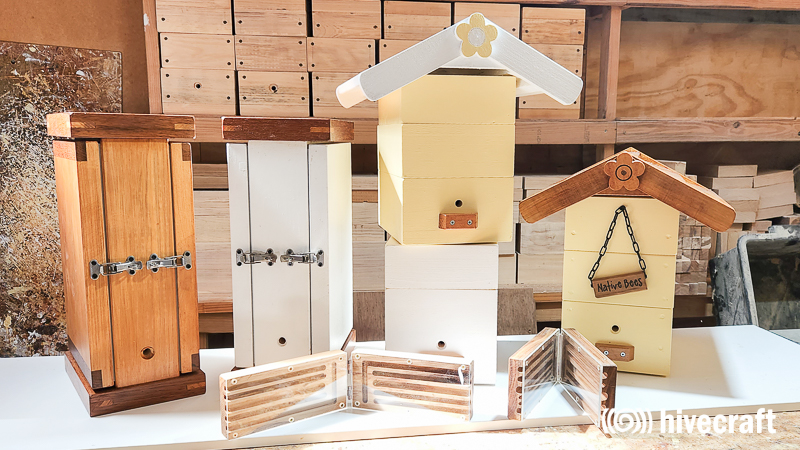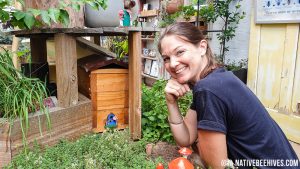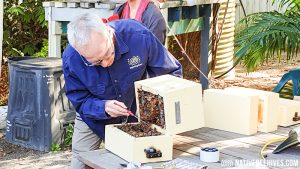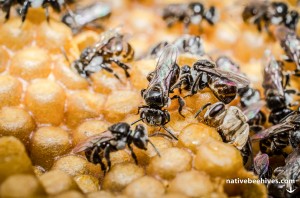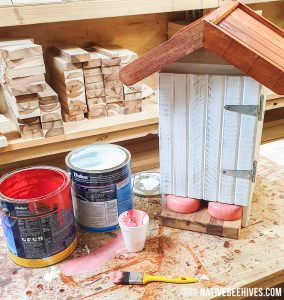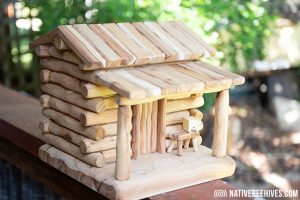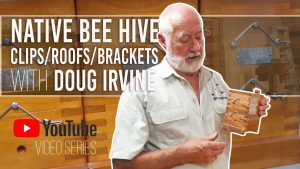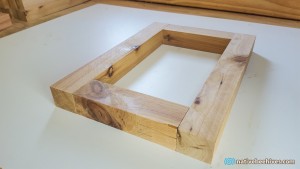Native Stingless Bee Box – Original Australian Trigona Hive – OATH
Updated: 26 July 2020
Note: Before you make a Native Bee Box read this article – New To Native Bees? Important – These plans are intended for people that already have bees. When you buy native bees they will come in a box already.
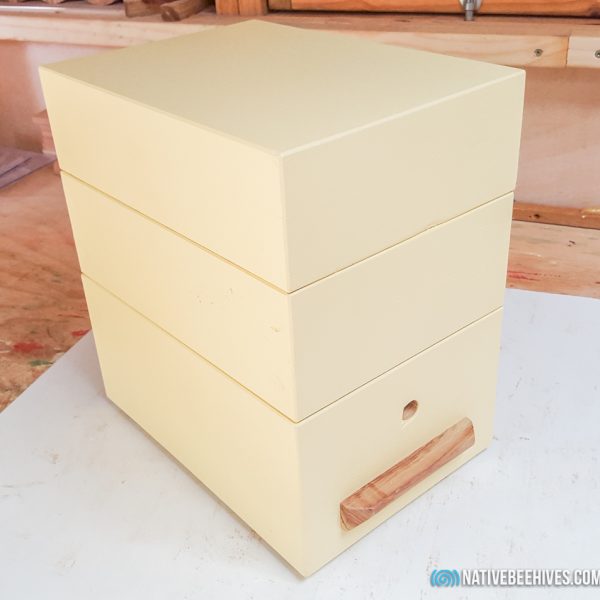
Here are some basic construction plans for the popular OATH design. This includes the Honey Super top section. You could make it without that section if you aren’t interested in collecting the honey. There are different designs, shapes and sizes, and different methods of construction, so feel free to experiment. The below is the basic design for the OATH.
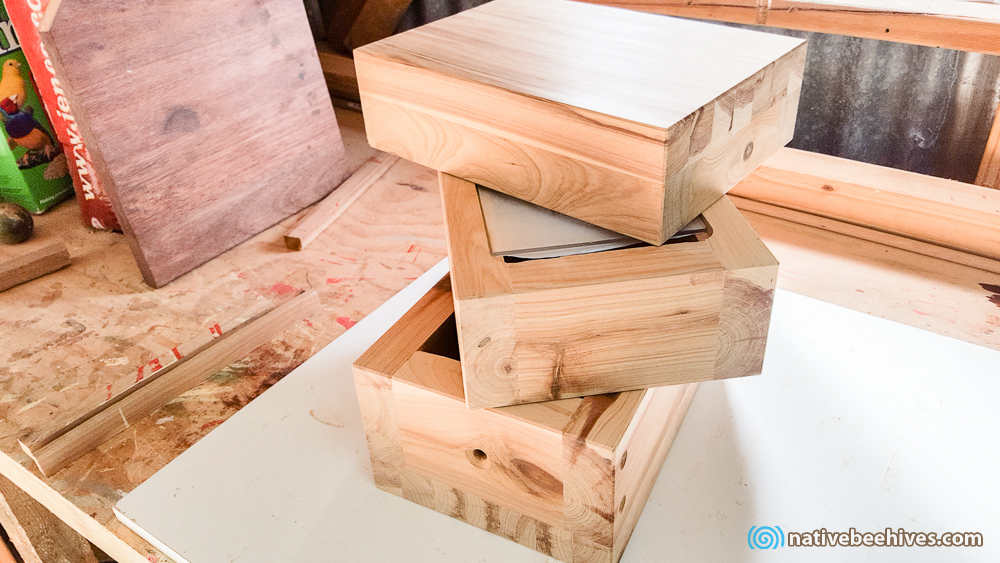
There’s many different kinds of timber and thicknesses used by different box makers, from the 19mm Pine you get from the big hardware stores to 50mm thick timbers. There’s a lot of different opinions about what is best. Most will recommend it be 25mm thick. View the Test Category to see insulation tests.

If you’re using 50mm thick timber then you could always make the overall dimensions larger so the internal volume doesn’t become smaller. If left unrestricted bees may make the brood cone 150mm wide, so even though the image below shows the brood cone support area at 130mm x 120mm you can vary the sizes. Bees can fit their brood cone in to much smaller thinner spaces in tree hollows.
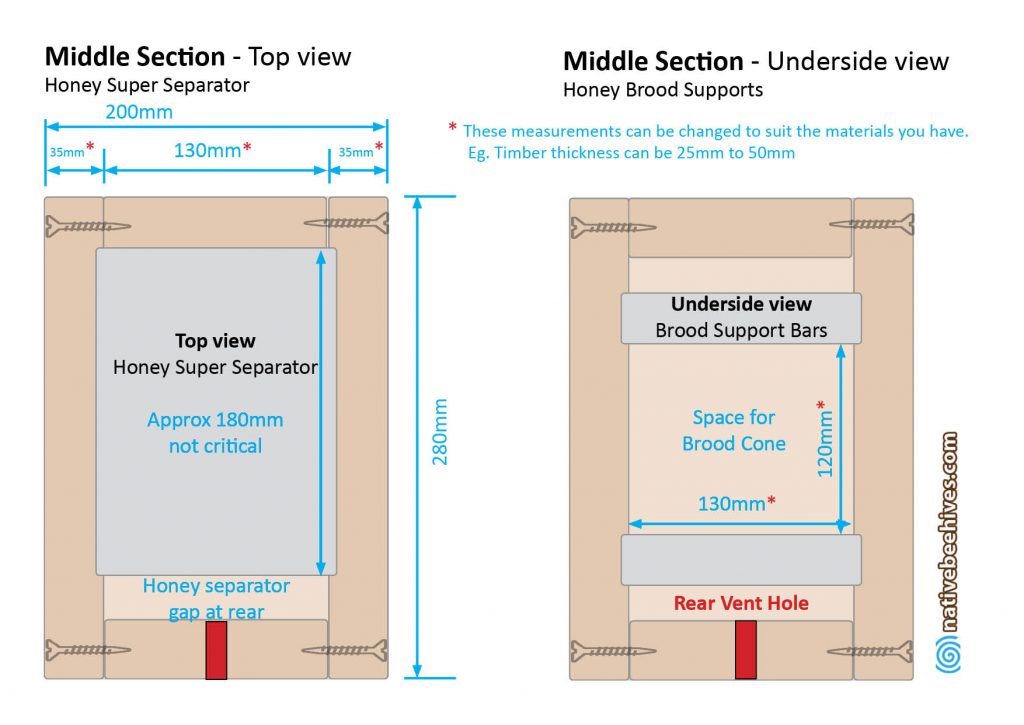
If your timber is 35mm thick then you might use 50 or 60mm long screws. Of course you can use nails. Pre-drill all nail or screw holes to prevent the timber splitting. I’d recommend galvanised screws for longer lasting strength and a good quality exterior wood glue.
The design above uses a join called a Butt Join, where the two pieces meet. The photo below shows a Rebated Join, where a section of one piece has been cut out and the second piece fits in to that area. Theory is that it’s creates a stronger join by adding bracing, and also has a slight increase in surface area connection..
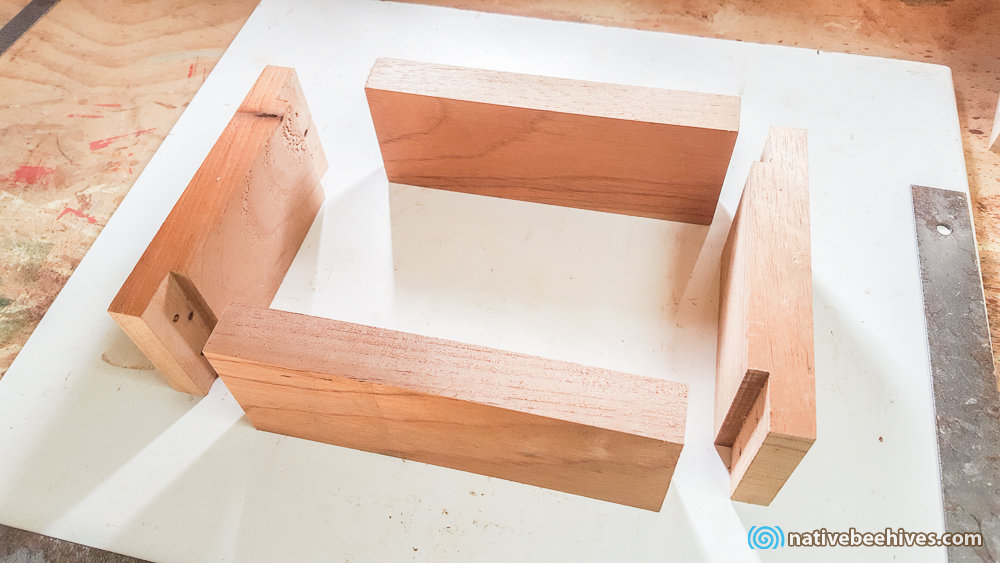
Split Bars & Division Plates
More info about Split Bars here: https://www.nativebeehives.com/splitting-plates-and-bars/
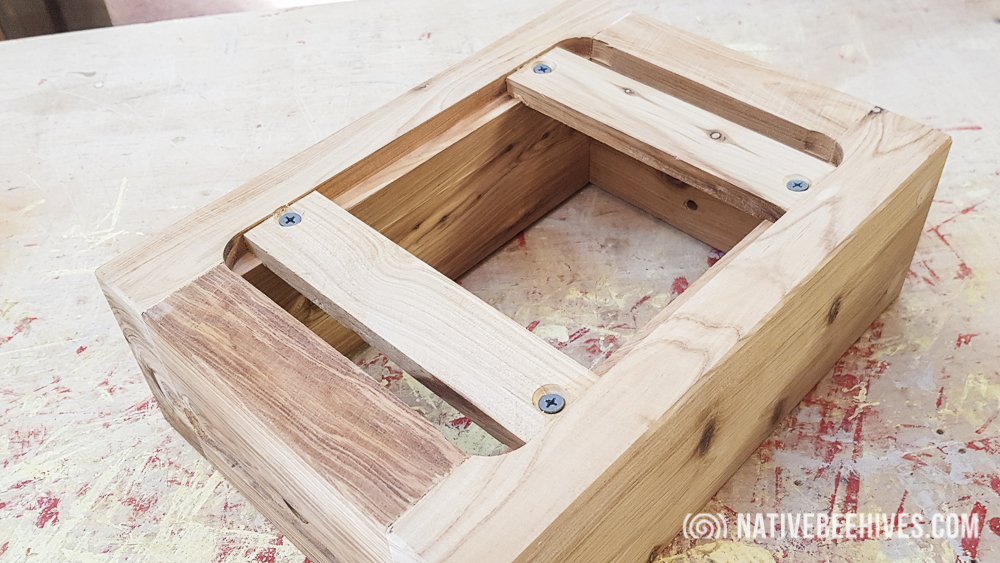
Above: Middle frame – pictured up side down to show the standard type Splitting Bars
Honey Super Separator Plate
Photos show two options. A gap at the end of the viewing window, or a hole in the viewing window.
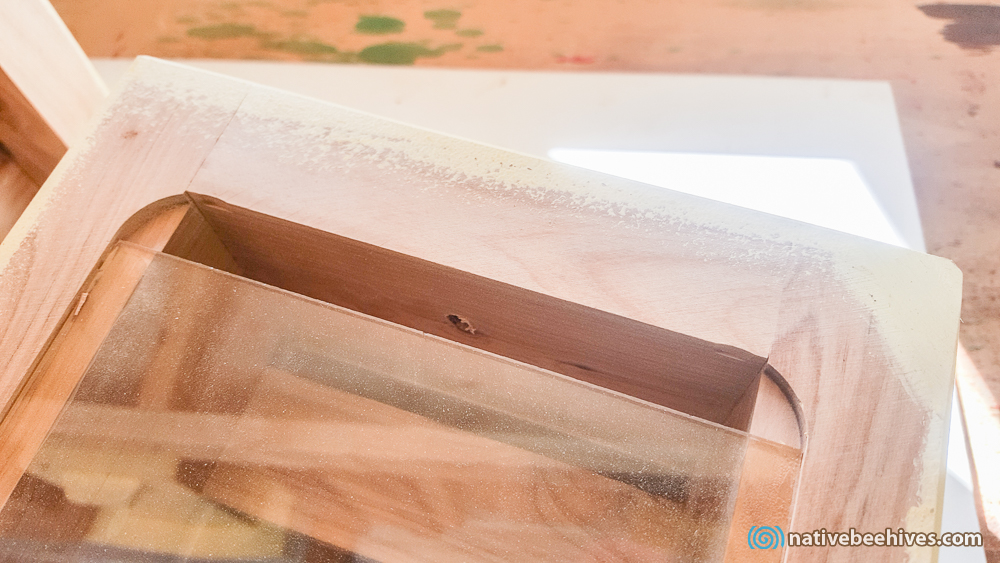

More info about Separator Plates here: https://www.nativebeehives.com/isolating-the-honey-super/
Entrance Hole and Rear Vent
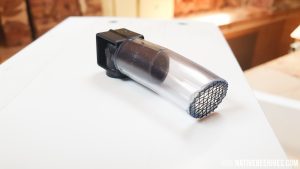
It’s fairly common now that box makers are using 13mm holes for both entrance and rear vents. This allows the use of the standard size irrigation type “black elbows”. These can be used to block the bees in for transport and to provide security for the rear vents against pests, and also to connect two boxes together for Budding/Eductions
Front Landing Pad
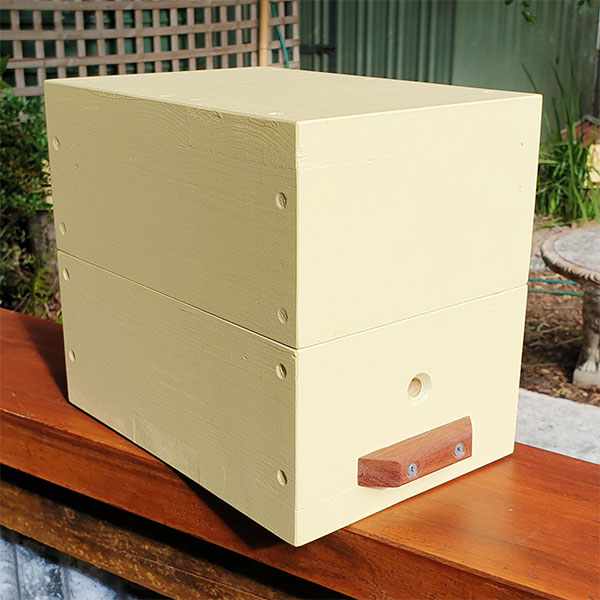
Landing pads aren’t really necessary as bees can access and enter the hive without the need for it, though it doesn’t hurt to have one as it can catch the bees if they crash land and fall, and they can be a little out of control sometimes.
Read more about front Landing Pads here: https://www.nativebeehives.com/landing-pad/
Internal Volume

Because a lot of box designs use the same outside measurements of 200mm x 280mm and then use different thicknesses of wood, it changes the internal volume.
If you’re using thicker than 35mm you should probably increase the outside dimensions to try keep the volume of each frame above 2 – 2.5 litres to give the bees some room to develop the colony. Also remembering that bees can fit their colony in to tiny spaces like little ground cavities and tree hollows that are only 2 litres total volume, so you’d get away with a 1 litre frame, but it’s thought that the bigger volumes like 2 to 3 litres frames could provide space to grow a stronger colony. In total you might be looking to achieve a 5 to 10 litre box. (two frames and a super)
If the box volume is too large, the bees may block off areas and only use a small section of the box. If the height of each frame is too high then the brood might only be contained in one of the frames and when it comes time to split your hive you might not be able to split the brood as it will only be in one frame.
Single Frame
Here’s some examples of internal volumes of a single frame with the common external dimensions of 280mm x 200mm x 90mm height
- 20mm thick timber: each frame might be around 3.4 litres
- 25mm thick timber: each frame might be around 3 litres
- 35mm thick timber: each frame might be around 2.4 litres
- 45mm thick timber: each frame might be around 1.8 litres
- 50mm thick timber: each frame might be around 1.6 litres
Honey Super Frame
Internal volumes of a Honey Super with the common external dimensions of 280mm x 200mm x 70mm height
- 20mm thick timber: 2.6 litres
- 25mm thick timber: 2.4 litres
- 35mm thick timber: 1.9 litres
- 45mm thick timber: 1.4 litres
- 50mm thick timber: 1.2 litres
Total Box Volume
The standard box design of 2 frames and a honey super total box volume
- 20mm timber: 9.4 litres
- 25mm timber 8.4 litres
- 35mm timber 6.7 litres
- 45mm timber 5 litres
- 50mm timber 4.4 litres
Coatings
Boxes can be finished with a good quality exterior paint or your preferred oil. More info about suitable oils and paint https://www.nativebeehives.com/coating-test/
Test Test Test
- Start out by making boxes for yourself and monitor the build quality over years. You might think your boxes are great when you’ve finished them but in one/two/six months they could have all warped.
- Wood like Cypress can be popular because it looks great new and is termite resistant but really needs plenty of time to “season” or dry out. It’s very unlikely you will find kiln dried Cypress. Cypress boxes should be made over many months and not over days or weeks. They will continue to warp and over many months. The frames will twist and the top lid and bases will cup.
- Test: Make some single frames, get them perfect so they sit against each other with no gaps and no rocking, then leave them alone for a month or two, then sit them against each other again and check the gaps and rocking. This will give you an indication of how stable the timber is.
- The same applies for the coatings. Testing should be done over a year or so. You’d want a good idea of what will happen to your boxes with bees inside and exposed to the elements.
Shelter
If you’re placing your hive box in the weather it should have some kind of roof to protect it from the rain. If water is allowed to run down the sides it can get in to the seems between the layers and possibly cause mould and rot.



